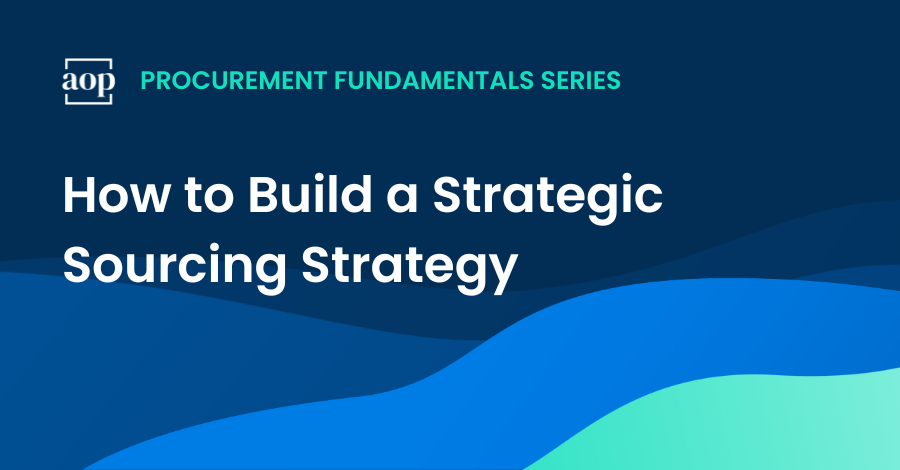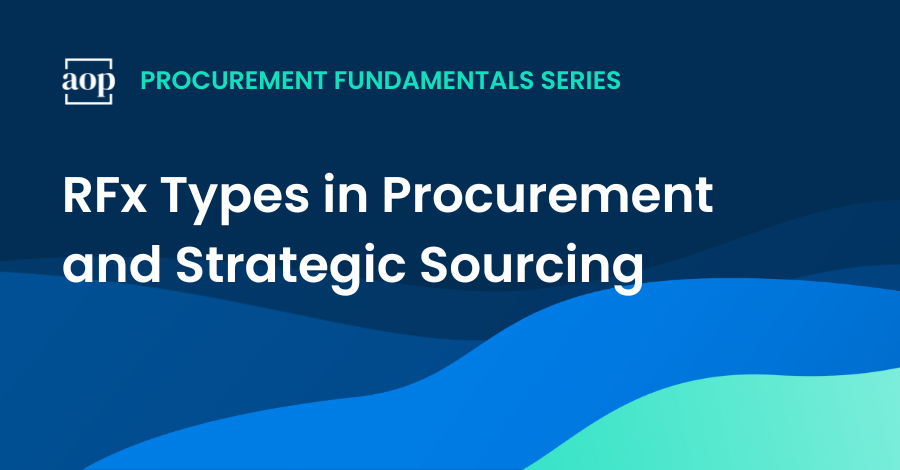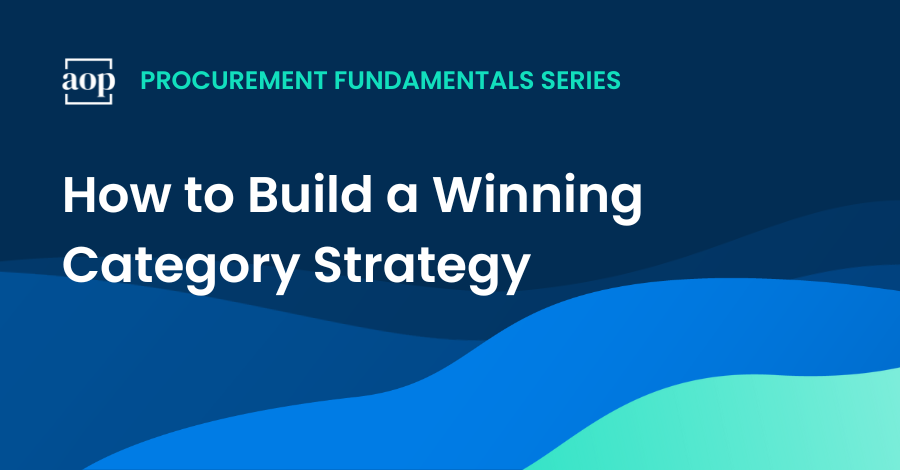6 min read
How to Build A Strategic Sourcing Strategy (that Goes Beyond Category and Supplier Management)
Philip Ideson : May 16, 2024

Strategic sourcing is one of the foundations of modern procurement. When executed well, it’s about holistically managing the entire acquisition process to optimize value, mitigate risks, and build stronger supplier relationships.
For many people strategic sourcing is represented by a 7 step process. While this looks good on paper, things are rarely as straightforward as (even the smartest consultants) imagine.
While hosting the Art of Procurement podcast I’ve interviewed hundreds of experienced procurement professionals and enterprise thought leaders. While I can’t distill their knowledge into a single strategy, I can share some common elements to consider.
Let’s go deeper into the “strategic” part of strategic sourcing through some practical tips on how you can go beyond the theory and frameworks.
What is a strategic sourcing strategy?
A strategic sourcing strategy is a comprehensive plan that outlines how an organization will acquire the goods and services it needs to operate effectively to meet your business objectives. To be strategic, it needs to go beyond simply finding the lowest price and focus on optimizing value, mitigating risks, and building strong supplier relationships.
Without clear alignment to business goals your sourcing strategy is simply a sourcing plan. The ultimate goal of a strategic sourcing strategy is to ensure a reliable supply of quality goods and services at the best possible total cost, while fostering innovation and collaboration with key suppliers for the benefit of the growth of your business.
Sourcing strategy is rooted in category strategy
It’s common that a sourcing strategy is aligned closely to a category management framework.
Not all spend categories are created equal. Each possesses unique characteristics, risk profiles, and impact on your business. Category management recognizes this diversity and emphasizes the need to segment and manage spend categories according to their strategic importance.
One of the most renowned frameworks for category segmentation is the Kraljic matrix.
This model categorizes items into four distinct quadrants based on two key dimensions: profit impact and supply risk:

The Kraljic matrix aides in the development of sourcing strategy by offering clear segmentation and guidance as to how to approach different categories of spend items:
- Strategic items: These are the high-stakes players in your procurement portfolio. They have a significant impact on profitability and carry high supply risks. Examples include critical raw materials, specialized components, or key outsourced services. Managing these items requires close collaboration with suppliers, long-term contracts, and risk mitigation strategies like dual sourcing or holding safety stock.
- Leverage items: These items offer high-profit impact but with lower supply risk. This quadrant often includes readily available goods and services with multiple potential suppliers. The focus here is on leveraging your buying power through competitive bidding, volume discounts, and strategic negotiation to optimize costs.
- Bottleneck items: While their profit impact may be low, bottleneck items carry a high supply risk due to limited availability or potential disruptions. Examples include specialized maintenance parts or unique services with few alternative providers. Managing these items requires ensuring supply continuity through close supplier relationships, safety stock, or identifying alternative sources.
- Non-critical items: These items have a low impact on both profitability and supply risk. They are often readily available commodities or standardized services. Procurement efforts for categories in this quadrant should focus on efficiency and cost-effectiveness, such as using e-procurement systems or blanket purchase orders.
The Kraljic matrix is just one example of a category segmentation model. Other frameworks, such as Pareto analysis or ABC analysis, can also be applied depending on your specific needs and industry. The key takeaway is that understanding and segmenting your spend categories is important for developing targeted sourcing strategies and optimizing your overall procurement performance.
Supplier segmentation strategies
Just as we categorize our spend, it’s equally important to segment our suppliers based on their capabilities, performance, and strategic fit with the organization. Supplier segmentation allows us to tailor our approach and build more effective relationships with each supplier based on their individual value and potential.
Here are some common supplier segmentation models:
- Strategic suppliers: These are your key partners who offer not just goods and services but also innovation, collaboration, and long-term value. They are often involved in co-development, joint ventures, or exclusive supply agreements. Building strong, collaborative relationships with strategic suppliers is crucial for driving innovation and maintaining a competitive edge.
- Preferred suppliers: These are reliable suppliers who consistently meet your quality, cost, and delivery requirements. They may not offer the same level of innovation as strategic suppliers, but they provide a stable and dependable source of goods and services. Maintaining good communication and performance feedback loops is essential for nurturing these relationships.
- Transactional suppliers: These suppliers provide readily available, commoditized goods or services. The focus here is on efficiency and cost-effectiveness. Competitive bidding, e-procurement platforms, and streamlined processes are key to managing transactional supplier relationships.
- Develop/nurture suppliers: This category includes suppliers with the potential to become preferred or even strategic partners. They may be small businesses, diverse suppliers, or companies with innovative offerings. Investing in their development through training, collaboration, and early involvement in projects can lead to long-term benefits for both parties.
Supplier segmentation should align with your category strategy. For example, strategic items often require close collaboration with strategic suppliers, while leverage items might be sourced from a pool of preferred suppliers through competitive bidding.
Sourcing strategies in procurement
Once you have a clear understanding of your spend categories and supplier segments, you can develop targeted sourcing strategies for each. Here are some common sourcing strategies and their applications:
- Single sourcing: This strategy involves relying on a single supplier for a specific category or item. It’s often used for strategic items where building a close, collaborative relationship with a supplier is crucial for innovation, quality control, or risk mitigation.
- Dual sourcing: Engaging two suppliers for the same category provides redundancy and competition, mitigating the risk of supply disruptions and encouraging better performance.
- Multi-sourcing: Utilizing several suppliers offers greater flexibility, access to a wider range of capabilities, and the ability to leverage competition for better pricing and service.
- Global sourcing: Procuring goods or services from international markets can offer cost advantages, access to specialized skills or resources, or entry into new markets. However, it also introduces complexities such as logistics, cultural differences, and geopolitical risks.
- Local sourcing: This strategy prioritizes suppliers within a specific geographic region to support local businesses, reduce transportation costs and environmental impact, or comply with government regulations.
- Nearshoring: Similar to local sourcing, nearshoring involves sourcing from nearby countries to reduce lead times, transportation costs, and cultural or language barriers.
- Outsourcing: This involves contracting external providers for non-core business functions, such as IT services, payroll, or customer support. Outsourcing can offer cost savings, access to specialized expertise, and increased flexibility.
The choice of sourcing strategy usually depends on various factors, including the nature of the item or service, market dynamics, cost considerations, risk tolerance, and your organization’s overall procurement goals.
Five ways to put your sourcing strategy into practice
Putting category and supplier segmentation into practice usually requires a structured approach and the right tools. Here are a few ways you can put your strategy into action:
- Analyze and classify spend: The first step is to gather and analyze your procurement data to identify spending patterns, key categories, and supplier performance. Spend analytics software can be invaluable for this task, providing insights into your procurement landscape and opportunities for optimization.
- Evaluate and map supplier performance: Evaluate your current suppliers based on predefined criteria such as quality, cost, delivery performance, innovation, and responsiveness. This assessment will help you segment your suppliers and identify areas for improvement or potential risks.
- Create processes and best practices: Based on your category and supplier segmentation, develop specific sourcing strategies for each segment or category. This may involve creating a sourcing calendar, identifying potential new suppliers, or establishing preferred supplier programs for key categories.
- Invest in key supplier relationships: Invest in building strong relationships with your key suppliers. This includes regular communication, performance feedback, joint innovation initiatives, and collaborative problem-solving. Supplier relationship management (SRM) software can help streamline communication and track performance metrics.
- Choose the right tools for the job. Technology plays a crucial role in supporting sourcing efforts. Procurement analytics tools provide data-driven insights, while e-procurement platforms and supplier management systems facilitate communication, collaboration, and performance monitoring. Make sure you choose the right tools for your unique business needs and maturity level.
Common challenges to strategic sourcing strategies
While the benefits of strategic sourcing are undeniable, it’s very likely everything won’t go according to your perfectly planned strategy.
Here are some of the most typical obstacles you might encounter on your way along with some ways you can solve them.
Data visibility and accuracy
Strategic sourcing relies heavily on data analysis. However, many organizations struggle with fragmented data, inconsistent formats, and a lack of visibility into spend.
Solution: Invest in spend analysis to consolidate data, cleanse it for accuracy, and gain insights into spending patterns. Implement data governance policies to ensure data quality and consistency moving forward.
Internal resistance to change
Shifting from traditional procurement practices to a strategic approach can face resistance. Stakeholders accustomed to established procurement routines may perceive the change as a threat or disruption.
Solution: Clearly communicate the benefits of strategic sourcing to stakeholders, emphasizing value beyond cost savings. Involve key stakeholders in the process and provide training to build buy-in and support for the new approach.
Supplier relationship management
Building and maintaining strong relationships with a diverse supplier base requires dedicated effort and effective communication. Category managers may have very different outlooks to how strategically they can manage suppliers in their category.
Solution: Implement a consistent supplier relationship management (SRM) program to categorize suppliers, establish clear communication channels, and track performance metrics.
Lack of skilled resources
It’s not uncommon for procurement professionals to transition to strategic sourcing roles from more operational procurement or buyer roles. For some people the shift from an operational to a strategic role may not be easy, as it also requires a shift in mindset.
Solution: Invest in training and development programs for procurement staff to enhance their skills and knowledge. Consider hiring experienced professionals or consultants to bridge any skill gaps and provide specialized expertise.
Bottom line on building a strategic sourcing strategy
In the Art of Procurement podcast I’ve interviewed hundreds of strategic visionaries and exceptional procurement professionals. While I can’t share a specific strategic sourcing strategy, one common trend is that strategic sourcing is as much about a mindset as it is about a method.
The key element to strategic sourcing is often the transition from operational procurement to an agile approach to continuous improvement. While understanding the steps involved in sourcing is important, true mastery lies in thinking strategically about your spend categories and supplier relationships in relation to your long-term business goals.
Remember, the key to success lies in continuous adaptation, data-driven decision-making, and fostering strong relationships with your key suppliers. In this journey you can set your own strategies. If you’re looking for more information to refine your own, you may find inspiration from the materials below.
Related topics and podcast episodes:
- Is Procurement Moving Away from Category Management?
- How Google’s Strategic Sourcing Team Became a Trusted Business Partner, with Tim Jones of Google.
- How to Build a Simple Sourcing Governance Process to Align Procurement Impact with Business Needs.
- Expense Management Tactics to Use when Sourcing and with Incumbent Suppliers
- Why Dual Sourcing as a Risk Mitigation Strategy May Not Be the Answer




.png)

